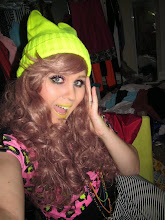Project 6 - Text from Jessi on Vimeo.
Writeup:
I'm not sure where text plays a part in my idea for the semester so this project was difficult for me. Overall, I am dissatisfied with the outcome, largely in part due to the time and effort spent in it for this extremely minuscule, unattractive piece. I guess now in retrospect I could have created plant imagery and other objects to represent green but I just don't want to get too heavily involved in imagery if I can help it. And I tried to get away from the "Lisa Frank color scheme".
Katsumi Asaba
Katsumi Asaba was born in 1940 in Kanagawa, Japan. He created his own firm, Asaba Design, Co. with clients such as Suntory, Seibu Department Stores, Seibu Saison Group, Takeda Chemical Industries, and Nissin Food Products. He is at the forefront of advertising design in Japan and the world.
He studied lettering for five years after he turned 19 at the Keinosuke Sato Institute of Typography which might be what led to his vibrant use of calligraphy with modern images of electronics/machinery and table tennis. He is interested especially in Tompa hieroglyphic characters that actually stem from Chinese tradition, a tradition that passes down these characters in Lijiang China specificially.
Most of Katsumi Asaba's work is featured in commercials, on packaging, and on posters with much of it being very easy to identify stylistically as that of the artist's. He often fuses traditional Japanese calligraphy with modern elements or products.
He also includes the Tompa hieroglyphic characters for added visual interest. The Tompa characters are often pictographs of an animal, plant, or object. He weaves in these characters with English and Japanese text in his own original work.
In his advertising job, the Japanese calligraphy is very prevalent and combined with the product's mascot. Kewpie mayonnaise featured this type of work and Katsumi Asaba is very well known with the work he created for the Kewpie company.
His work is significant and relevant because he's blending a mixture of tradition, modern day, mythology, and science fiction. In a sense, he is combining our past, present, and future into one so that when someone sees his work they feel as if they are in a place where one can be more aware. Katsumi Asaba has a set style but it is obvious which of his images are used for products and those that are used for his own personal work. The personal work tends to be more radical and ambitious while the advertising work is obviously made in order to impress and satisfy corporate appeal.
I do believe his work is influential. I am a rabid fan of Suntory and Kewpie products myself so when I see these on the shelves or in my kitchen, I'm getting a glimpse of past, present, and future every time. The work he does not only satisfies corporations but also the art galleries. Yes, he makes work for consumer consumption and how much of it left to make for just himself is unknown. But eating is always a good thing and he has a good thing going on in him being able to have his own design firm and being able to live comfortably.
Work:
http://www.tdctokyo.org/awards/award97/97membersilver_e.html
http://www.kanagawa-arts.or.jp/16kiaf/en_event_7.html
http://www.dnp.co.jp/gallery/ggg_e/exhibition/g056/index.html
http://universes-in-universe.org/eng/bien/echigo_tsumari_triennial/2009/tour/matsunoyama/john_kormeling
http://www.2121designsight.jp/schedule/inori/outline-e.html
http://ffffound.com/image/ea5a645980bf5651dbb8c0a5c0b03ffb1ce4451f


